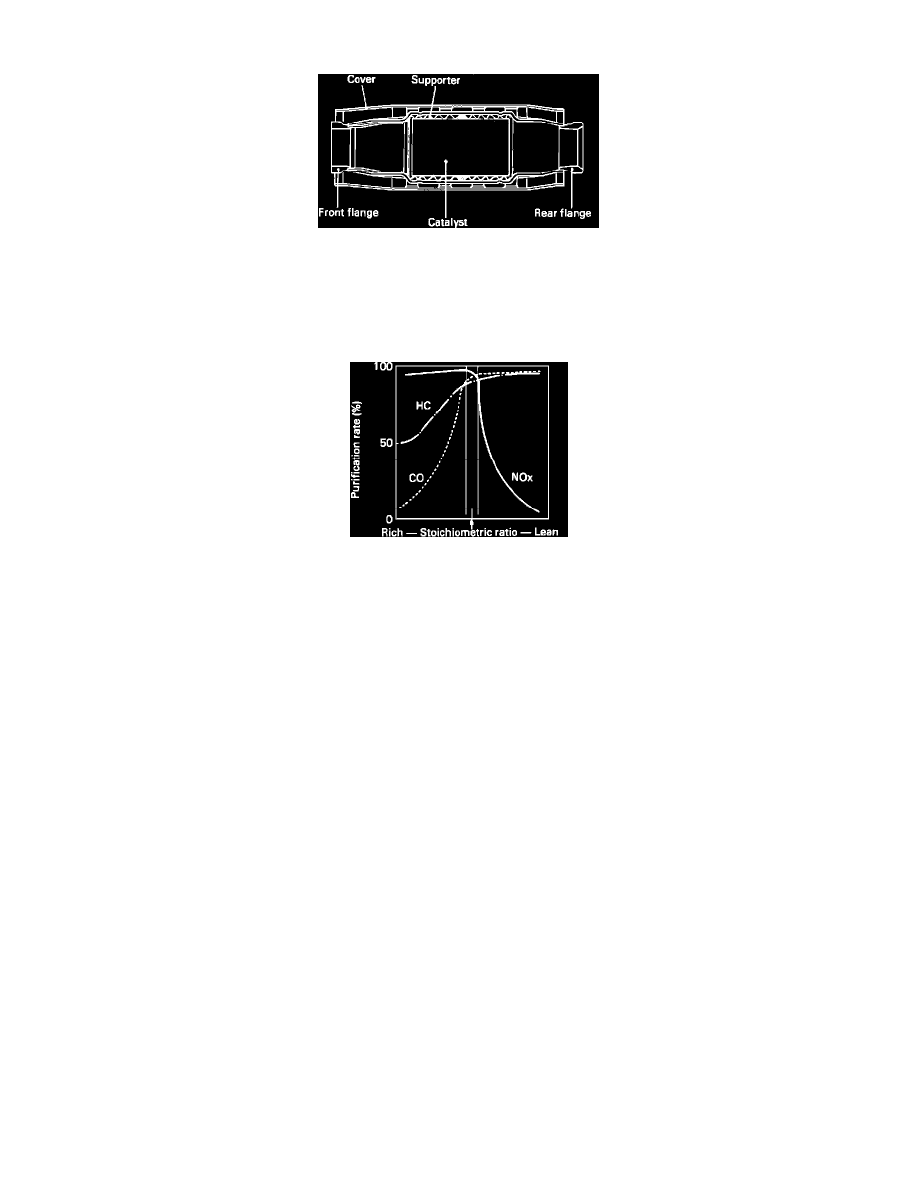Eclipse L4-1795cc 1.8L SOHC (1990)

Catalytic Converter: Description and Operation
Fig. 38 Underfloor Catalytic Converter
The catalytic converter promotes both oxidation (burning) and reduction (removal of oxygen) of the exhaust gas mixture to achieve emission
specifications before release to the atmosphere. Oxidation of Hydrocarbons (HC) and Carbon Monoxide (CO) results in water vapor and carbon dioxide.
Reduction of Oxides of Nitrogen (NOx) results in nitrogen and oxygen. The catalytic converter is a monolythic three-way device that uses catalytic
compounds applied to an integrally constructed honeycomb carrier surface in the center of the exhaust pipe.
Converter Efficiency VS. Stoichiometric Fuel/Air Ratio
The catalytic converter removes CO, HC, and NOx from the exhaust stream most effectively at the stoichiometric (14.7 to 1 plus or minus 1%) fuel-air
mixture ratio and temperatures between 400 to 800 degrees C (750 to 1500 degrees F).
Engine malfunctions such as mis-firing can result in exhaust temperatures exceeding 1400 degrees C (2500 degrees F). These extreme high temperatures
can cause the substrate to melt resulting in destruction of the converter. The use of leaded fuels should also be avoided. Lead in the exhaust residue will
coat the catalyst preventing catalytic action. Excessive oil residues in the exhaust can also poison the catalyst.
